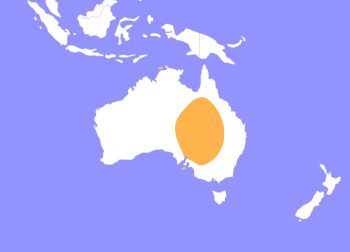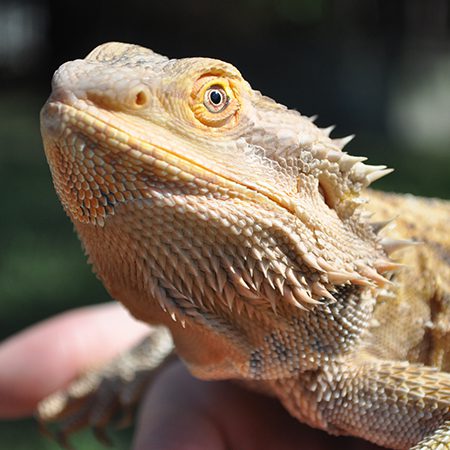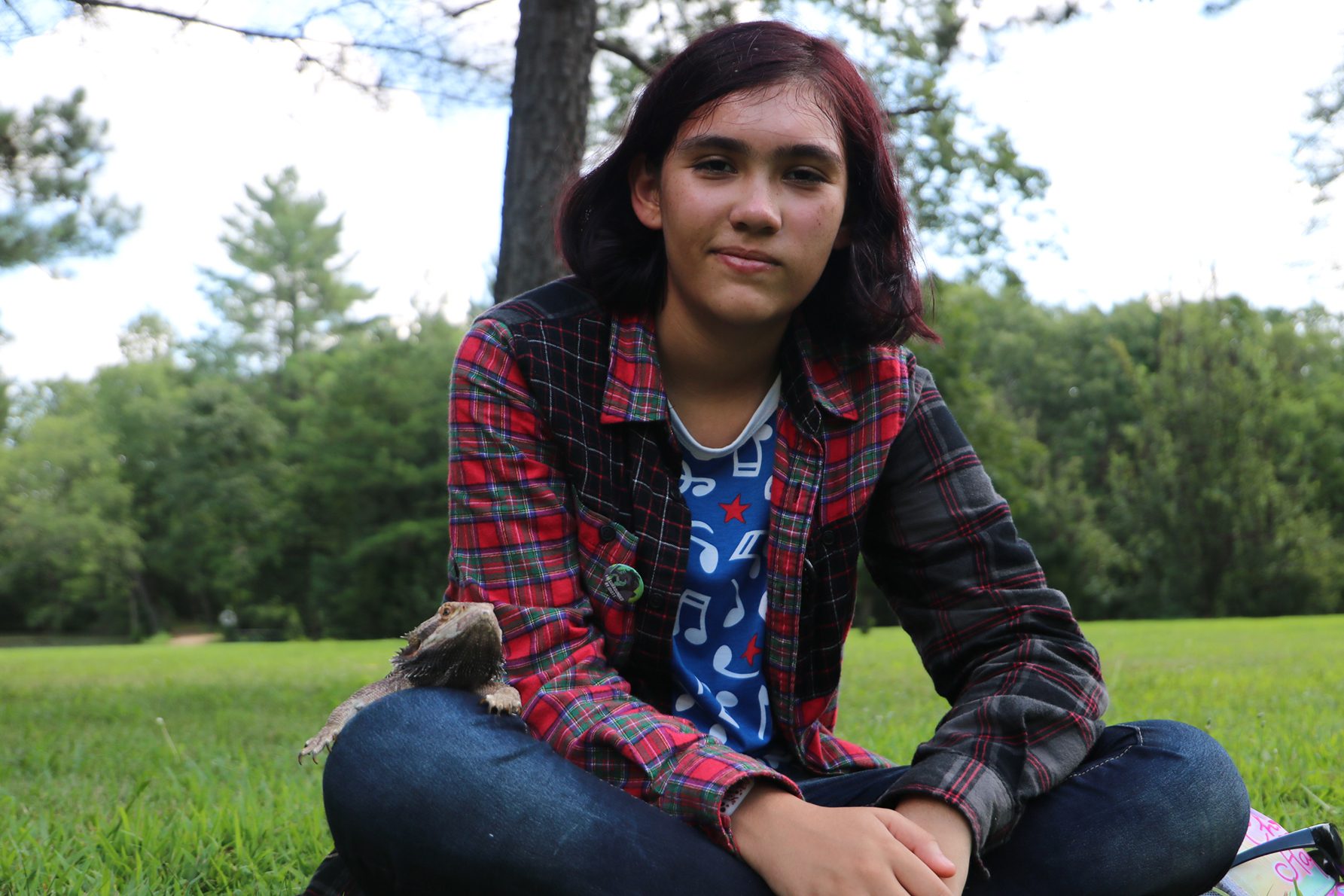Bearded Dragon
Pogona vitticeps
In the wild, Bearded Dragons color depends on the environment they live in. A desert habitat favors a yellow-brown color, whereas a forested habitat would favor a brown or gray. The goal of the color is to blend in to avoid predators. Captive breeding, however, has introduced many other colors and patterns. Colors can range from white to yellow to red to green. Their underbellies tend to be white while their backs and heads are usually striped in different colors.
Bearded Dragons are named for their “beard”. The skin on their chin can be inflated for mating or dominance purposes. The beard also has pointed scales to look more intimidating; these scales are also found along their backs and sides for predator protection. Like other desert lizards, when scared, bearded dragons can make their bodies bigger to either seem more intimidating or wedge themselves under rocks so nothing can pull them out.
Beardeds can be 1-2 ft long, including their tail, and weigh around a pound. The average lifespan is 8-10 years. A couple of interesting behaviors they exhibit are head bobbing, used to court a female or show dominance, and hand waving, used for species recognition or avoiding aggression.

Bearded Dragons are native to Australia. They inhabit rocky, desert central regions of the country.
HABITAT -Can live in a variety of habitats, like deserts, dry forests, or scrublands.
DIET -Being opportunistic omnivores, they eat plants, insects, and even small rodents or lizards.
FUN FACT -Captive bearded dragons likely come from one founder stock that was smuggled out of Australia.
SOCIAL BEHAVIOR -They are mainly solitary, but can be housed in pairs (not two males).
ACTIVITY -They are diurnal, meaning they are active during the day.
PREDATORS -Predators include large lizards, dingoes, and birds of prey.
SIZE -They can be 1-2 ft long, and weigh 0.6-1 lb.
RELATIVES -The Pogona genus includes other beardeds, such as the Western and Dwarf dragons.
CONSERVATION -They are not evaluated by the IUCN.
Cub Creek Animal Care Information
Housing - Our Bearded Dragons are housed in the Reptile Room, where the rest of our lizards and snakes are also kept. They live in large heat and UV light-controlled enclosures. Fresh water and plenty of places to hide, explore, and bask are provided for them. Granite and Slate live together while Spyro lives in his own enclosure.
Diet - Our lizards are fed on a reptile specific schedule, meaning they are fed Monday, Tuesday, Thursday, and Saturday. Reptiles have slow metabolisms and do not require to be fed everyday if they are fed adequately. They are given apple, shredded sweet potato, and chopped greens supplemented with a calcium powder in order to give them all the necessary nutrients they need to be healthy.
Enrichment - Most of the enrichment we give our lizards comes from handling and socializing them. In the summer, they get held daily and sometimes even brought outside when it is warmer. During the off-season, Animal Interns can be found carrying them around on their shoulders as they work!


